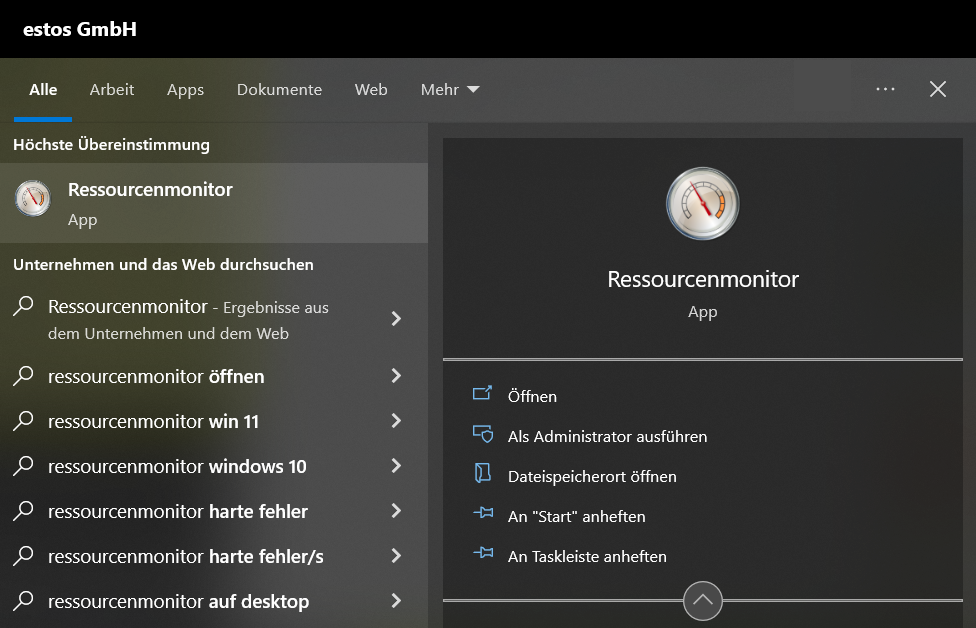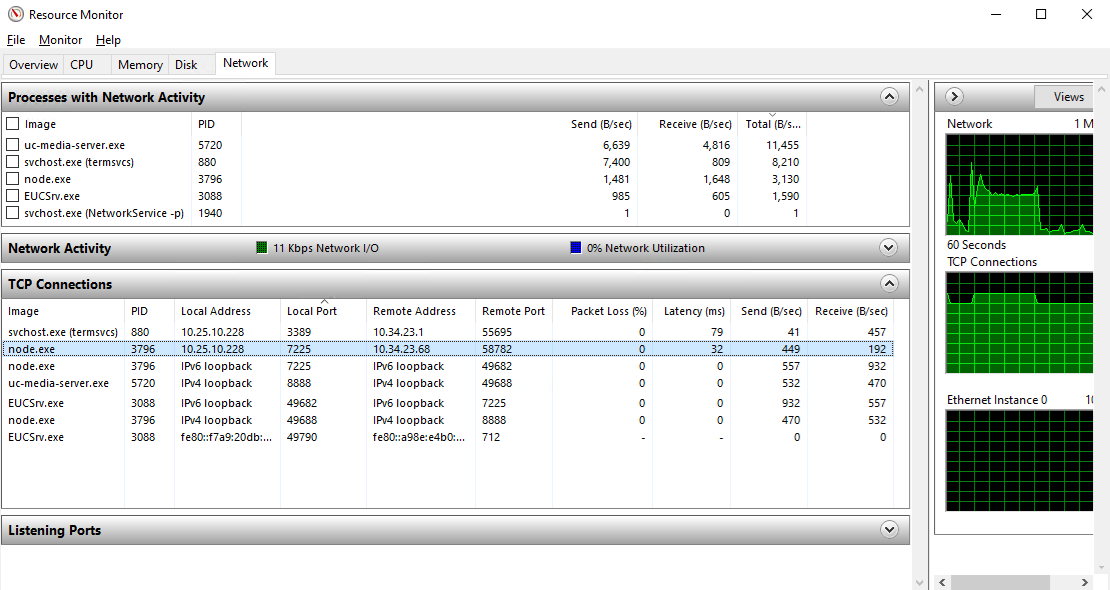Finding out the port allocation of an application
| Update status | January 2025 |
|---|---|
| Relevance | all estos products for Microsoft Windows |
This article explains how to find out which program or service occupies a particular IP port.
This is often necessary, for example, to set up the web service or in the case of error messages regarding doubly assigned ports.
Procedure
netstat
- Run the "cmd" command.
- Type "netstat -ano" followed by ENTER.
- optionally, you can also use "|" (pipe) followed by the "find" command to define the result more precisely, e.g. to search for port "8080": netstat -ano | find "8080".
- Search for the port in the "Local Address" column and note down the corresponding "PID".
- Go to Processes/Services in the Task Manager (for processes, select "Show processes of all users").
- "Select View\Columns -> Enable PID (Process ID)".
- Now you can see which program or service uses which PID and you know what occupies the corresponding port.
Example
In the example you can see that the program "MetaServer.exe" listens to port 8080 for IPv4 and IPv6.
Example screenshots: Determine port assignment via cmd.exe "netstat -ano" and Windows Task Manager display details with PID

Microsoft Windows Resource Monitor
An alternative way to determine the ports used by the applications is to use the Microsoft Windows Resource Monitor.
The Network tab contains a list of the monitoring ports used (Network/Listening Ports).

Alternatively, the Microsoft Windows Resource Monitor can also be started by entering resmon or resmon.exe in the Run dialog (WIN+R).
The Network tab contains a list of the monitoring ports used (Network/Listening Ports).
Example 1 - Monitoring ports
In the example shown here, it can be seen that the estos ProCall Analytics web server can be reached on TCP port 8732:
Example screenshot: Microsoft Windows Resource Monitor – Network Tab – Monitoring Ports
However, the resource monitor can also be used, for example, to check client connections to the server.
Example 2 - TCP connections
The following example shows that an estos ProCall Mobile app (with IPv4 10.34.23.68) has successfully established a TCP connection to the ProCall Enterprise Web Server (node.exe) via HTTPS port 7225 on IPv4 10.25.10.228.
Example screenshot: Microsoft Windows Resource Monitor - Network tab - TCP Connections

Further information
Release ports for estos products – which network interfaces are used? Skip to end of metadata